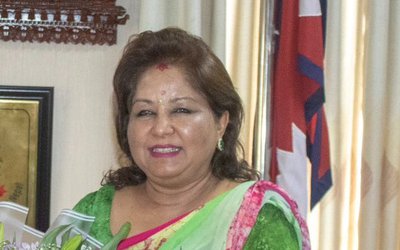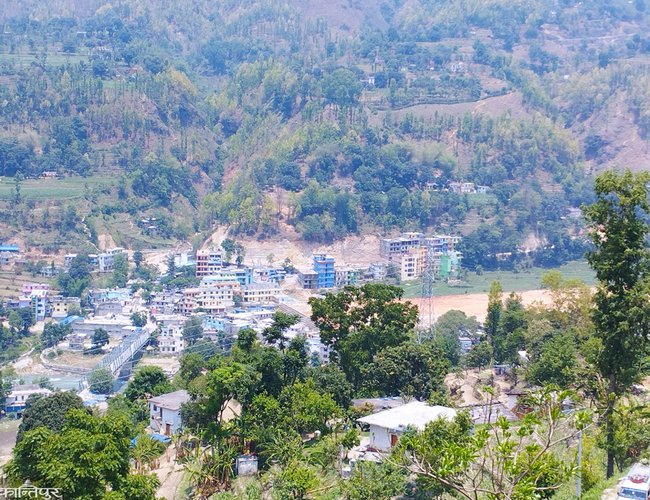
The operationalization of the Chameliya Hydropower Project has proved to be a game-changer, significantly improving the lives of residents in Nepal's remote region. Despite initial skepticism surrounding the substantial investment in such a large-scale project, the decision by the government of the Republic of Korea to support the 30 MW Chameliya hydropower project in 2005 was aimed at enhancing the lives of people in the Sudur Paschim Province, formerly known as the Far Western Region.
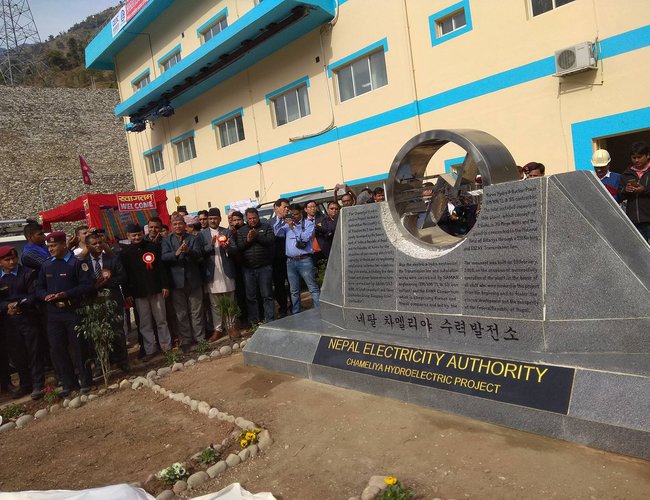
The project, which began in 2005 and was completed in 2018, faced a temporary halt from 2014 to 2018 due to cost implications associated with altering the tunnel's course. However, during his first tenure as the Managing Director of NEA, Kul Man Ghising successfully revitalized three major hydropower projects, Kulekhani III, Trishuli 3 A, and Chameliya, which had been abandoned by the government as unviable ventures.
Furthermore, in the wake of the severe damages caused by the 2015 earthquake, MD Ghising expedited the construction of the 456 MW Upper Tamakoshi project, ensuring its timely completion. This proactive approach by Ghising demonstrated his commitment to overcoming challenges and furthering Nepal's hydropower development.
The Chameliya Hydropower Project stands as a testament to the transformative impact that well-executed projects can have on remote regions, uplifting communities and paving the way for future growth and prosperity.
The aforementioned projects have played a pivotal role in ensuring the stability of Nepal's energy supply. However, the significance of the Chameliya Hydropower Project extends beyond this aspect. It holds the distinction of being the first large-scale initiative in the Sudur Paschim Province, spearheaded by former Prime Minister Sher Bahadur Deuba.
Prime Minister Deuba officially launched the Chameliya Hydropower Project in Balach, Shailya Shikhar Municipality-1 on February 9, 2018. It is noteworthy that this project was initiated during his previous tenure as prime minister back in 2004.
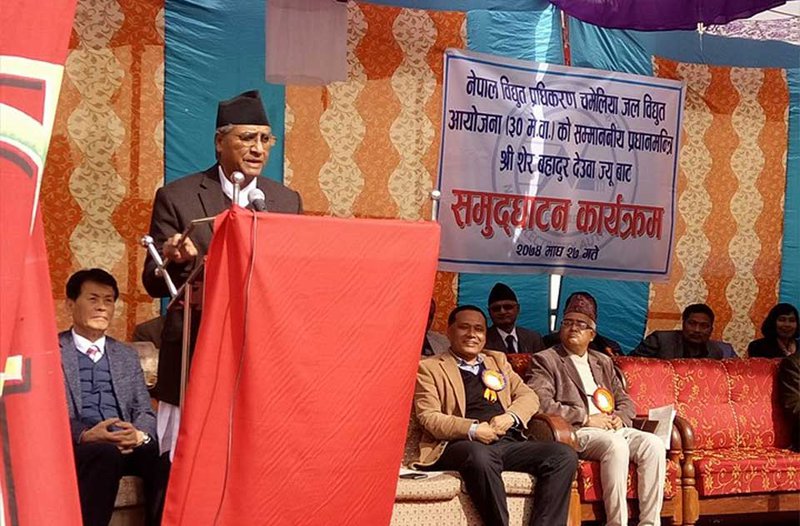
During the inauguration speech, Deuba emphasized that this 30 MW project would not only bring about a transformative impact on the lives and livelihoods of the people in the Far West region but would also provide a substantial boost to the nation's economy.
Over the course of 11 years, the project was constructed at a cost of Rs 16 billion with government funding. Since its commercial operation began, the plant has been producing 184.2 million units of electricity annually, contributing significantly to the country's power generation and bringing in approximately Rs. 1.10 billion in revenue on an annual basis.
The Chameliya Hydropower Project stands as a testament to the vision and dedication of Deuba, and it continues to have a lasting impact on the region's development, energy generation, and economic growth.
Five years after its inception, the envisioned reality by the government of the Republic of Korea and Deuba, has materialized, albeit with some modifications. Building upon the success of the Chameliya hydropower plant and the establishment of transmission connections to Attaria, the private sector has undertaken the construction of additional hydropower projects in the region, namely Upper Chamelia, Naugad, Naugad-2, and Makrigad. This development signifies the growing momentum and confidence in the region's hydropower sector.
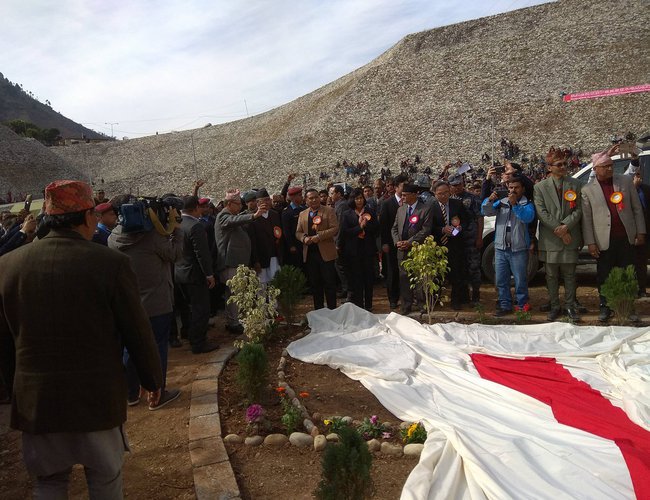
Reality after Five Year
A notable example is the transformation in the life of Bir Bahadur Thagunna, who turned 24 years old, when the Chameliya hydroelectric project began 17 years ago. He vividly recalls growing up alongside the project with his family, experiencing the changes it brought. The power generation testing for the Chameliya project started in 1974, marking a turning point in the Thagunna family's way of life.
Previously, Bir Bahadur's father, Ishwari Thagunna, worked as a porter in Pithoragarh, India, for six months at a time to sustain the family. Basic essentials like salt and oil would last for a hundred years with the income earned. However, once Ishwari secured employment at the Chameliya project, he began to promote the fruits, vegetables, and legumes grown in his garden. With increased income, he was able to send his son Bir Bahadur to study in Terai. Today, the Thagunna family resides in a concrete home within the community.
In Terai, two additional acres of land have been cultivated, symbolizing the expanding agricultural activities. Ishwari was pleasantly surprised to witness the progress when he visited the Gokuleshwar market, stating that he never anticipated such development, including the accessibility of cars, the transformation of Gokuleshwar into a bustling market, and the availability of various facilities within the hamlet.
Dhan Bahadur Negi from Shailyashikhar, connected to the Chameliya project, shares that life has significantly improved for those in the vicinity. According to him, those who received land compensation from the hydropower project experienced an overnight transformation into millionaires, but even those who did not receive compensation have benefited from the positive impact of Chameliya.
Overall, the Chameliya hydropower project has brought about substantial changes, both economically and socially, improving the lives of individuals and communities in the region. It has spurred further development and has proven to be a boon for the entire area, ushering in new opportunities and prosperity.
Thirteen years ago, Bhuvan Bhandari, a young entrepreneur, embarked on his business journey from a humble two-room guesthouse in Gokuleswar. Following the initiation of the Chameliya project in 2063, Bhandari opened a small hotel and witnessed a significant improvement in the main highway connecting Gokuleshwar. An 18 km new road was constructed from Gokuleshwar to Balanch, resulting in increased traffic from Koreans and Chinese. Economic activity in the region unexpectedly surged, with debris and resources flowing in.
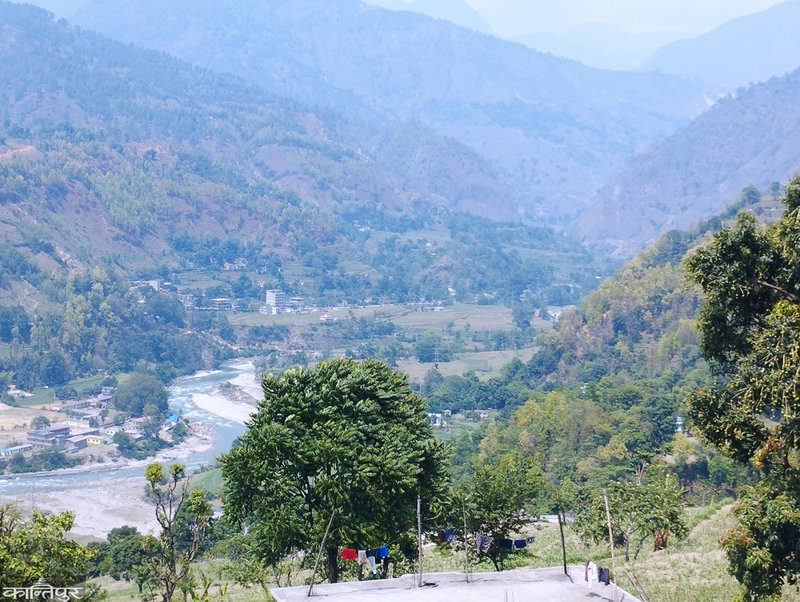
Bhandari has personally witnessed how gaining direct or indirect employment has profoundly transformed the lives of ordinary people. The Gokuleswar market now boasts three private bank branches, well-established hotels, an agricultural campus, and private schools. Additionally, a hospital with better facilities than the main office has been developed. Suresh Shrestha, another businessman, concurs that the region's way of life has dramatically changed over the past 15 years.
Seventeen years ago, residents affected by the Chameliya hydroelectric project received over 1.3 billion in compensation. It became more lucrative for individuals to work in the village, offering twice the amount of money compared to elsewhere. Furthermore, nearly two billion from local resources were utilized during the project's implementation. Although the construction of the project commenced six years later than planned and incurred almost double the expected cost of 16 billion, Bhandari stated that by the time the project was inaugurated in 2007, the economically remote areas of Baitadi and Darchula had experienced notable progress.
The significance of the first mega hydropower project, Chameliya, as a crucial source of economic growth and infrastructural development, cannot be contested. Despite potential disagreements regarding the project's various costs, it has already generated enough revenue in less than five years of operation to repay the loan. Furthermore, the construction of a 132 kV transmission line has connected remote areas in the Sudur Paschim region not only to the country but also to the rest of the world.
In summary, the Chameliya project has brought about remarkable advancements, transforming the economic landscape and improving infrastructure in the far western and Karnali Province. It stands as a testament to the project's undeniable value and its role in connecting previously remote regions to greater opportunities and global connectivity.
The Chameliya Hydropower Project, with its 30 MW capacity, has been a significant contributor to the Nepal Electricity Authority (NEA), generating approximately Rs. 1.50 billion annually with an average yearly generation capacity of 184.2 GWh.
The construction of the 131 km long 132 kV transmission line from Balanch in Darchula to Baitadi, Dadeldhura, Doti, and Attariya Kailali has brought about a transformative change in the entire region, which was previously characterized by a low Human Development Index. The availability of transmission lines has spurred investment and economic growth in the area.
Civil works for the project were originally scheduled to be completed by May 2011, following the contract agreement with China Gezuwa Water and Power Group Company on December 21, 2006. However, political unrest and significant geological disruptions, including the construction of an 800-meter tunnel, caused delays, and the civil construction was ultimately finished in 2018.
The electro-mechanical, hydro-mechanical, and Balanch-Attariya 132 kV Transmission line equipment was built by the Korea-based K.H.N.M.P Consortium, representing the latest and most advanced technology.
While the initial cost estimate for the project was 99.9 million US dollars, political unrest, design changes, and geological hazards led to the final cost amounting to 158 million dollars. It is important to note that project costs have increased during the implementation.
The project was initiated due to the strong commitment of the Korean government's Economic Development Cooperation, which provided a soft credit of 45 million US dollars for the electromechanical, hydro-mechanical, and 132 kV Transmission Line through the Korean Exim Bank.
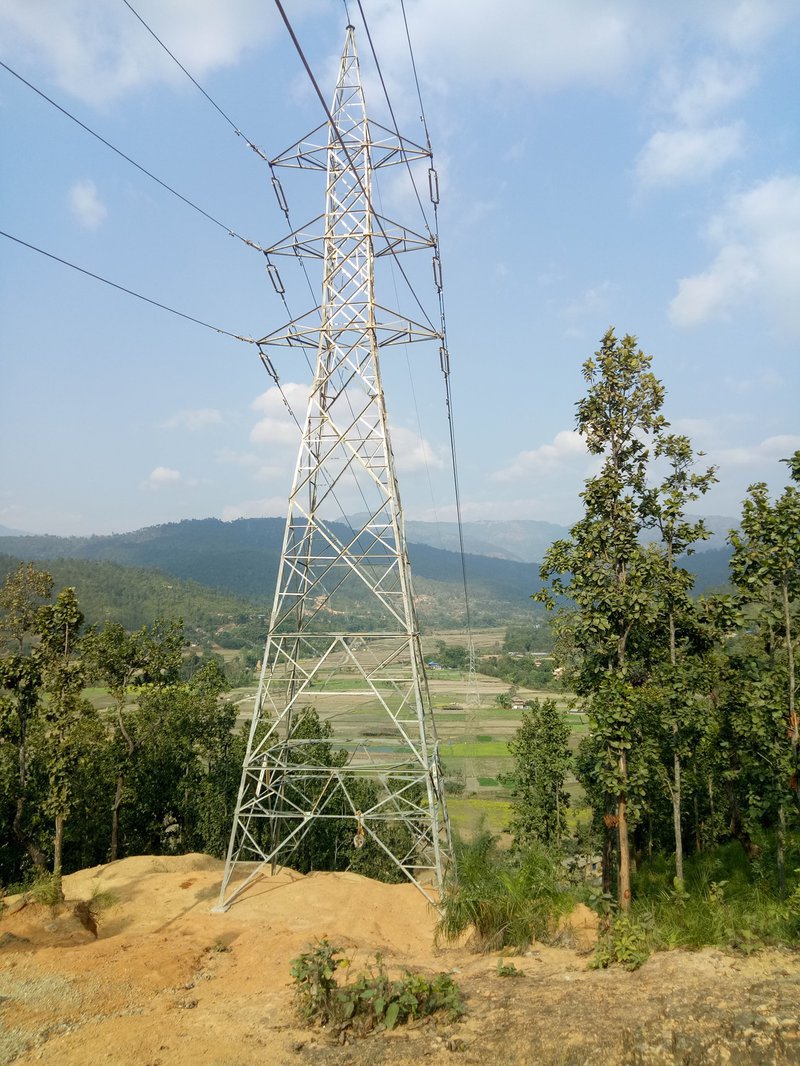
The electro-mechanical, hydro-mechanical, and Balanch-Attariya 132 kV Transmission Line equipment was reportedly built by the Korea-based K.H.N.M.P Consortium, representing the latest and most advanced technology.
Initially, the cost estimate for the project was 99.9 million US dollars, but due to political unrest, design changes, and geological hazards, the final cost amounted to 158 million dollars to increase during the implementation.
The project was initiated due to the strong commitment of the Korean government's Economic Development Cooperation, which provided a soft credit of 45 million US dollars for the electromechanical, hydro-mechanical, and 132 kV Transmission Line through the Korean Exim Bank.
The project spent Rs. 600 million on consultants in addition to Rs. 7.84 billion on land acquisition, electromechanical parts, and hydromechanical equipment. Similar to this, Rs. 2.54 billion will go into transmission, Rs. 194.8 million will go toward additional transmission-related projects, and Rs. 50 million would go toward environmental protection. 6.18 billion rupees were added due to currency translation losses, price adjustments, and an extra cost of Rs. 3 billion for administration. The overall expense was about Rs. 15 billion.
The strong initiatives of Minister Prabhakar, the administrative support of Secretary Upadhyaya, and the managerial skills of Ghising have played a pivotal role in bringing the nearly stalled Chameliya Hydropower Project, which had experienced delays of almost 10 years, close to completion.
The Republic of Korea's ambassadors to Nepal, veteran career diplomats Choe Young-Jin and Park Young-Sik, who also made significant contributions to the project's completion, would be pleased to learn about the region's economic change.
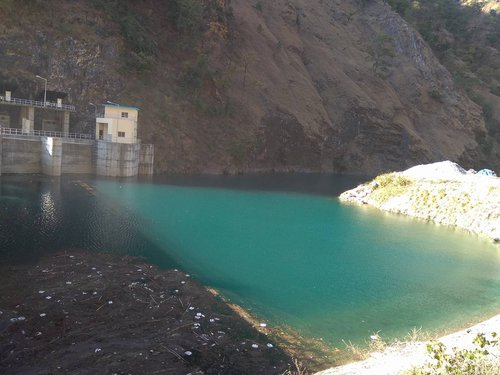
The 136-kilometer-long Balach-Ateriya 132kV Transmission line, which is located in Balach of Darchula, 800 kilometers west of the capital, helps to evacuate 8.5 MW generated by Api Hydro before the inauguration of main project.
Despite the substantial cost involved, the completion of the Chameliya project has revolutionized the lives of people in the far-western region, providing a reliable energy supply and paving the way for more new hydropower projects.
It serves as a testament to the fact that with dedicated leadership and unwavering commitment from concerned ministries and officials, seemingly impossible tasks can be achieved. The support and backing of Kul Man Ghising, Minister Janardan Sharma Prabhakar, and Secretary Anup Kumar Upadhyaya have been instrumental in making the Chameliya project a success.
Also reads link s
Based on the reporting of DR Pant, Bhavani Bhatt reporters of Kantipur Daily.

Keshab Poudel
Poudel is the editor of New Spotlight Magazine.
- HELVETAS NEPAL’S RIVERBED FARMING: Shift From Overseas To Local Farming
- Jul 26, 2024
- POLITICAL SCENARIO : K.P. Sharma Oli's Resurgence
- Jul 21, 2024
- UNDP/MinErgy: An Inventive Approach To Clean Brick Kiln
- Jul 19, 2024
- HELVETAS NEPAL: Nutrition Through Riverbed Farming
- Jul 18, 2024
- NOU Opens To All: Dr. Shilu Manandhar Bajracharya, Vice Chancellor
- Jul 15, 2024






